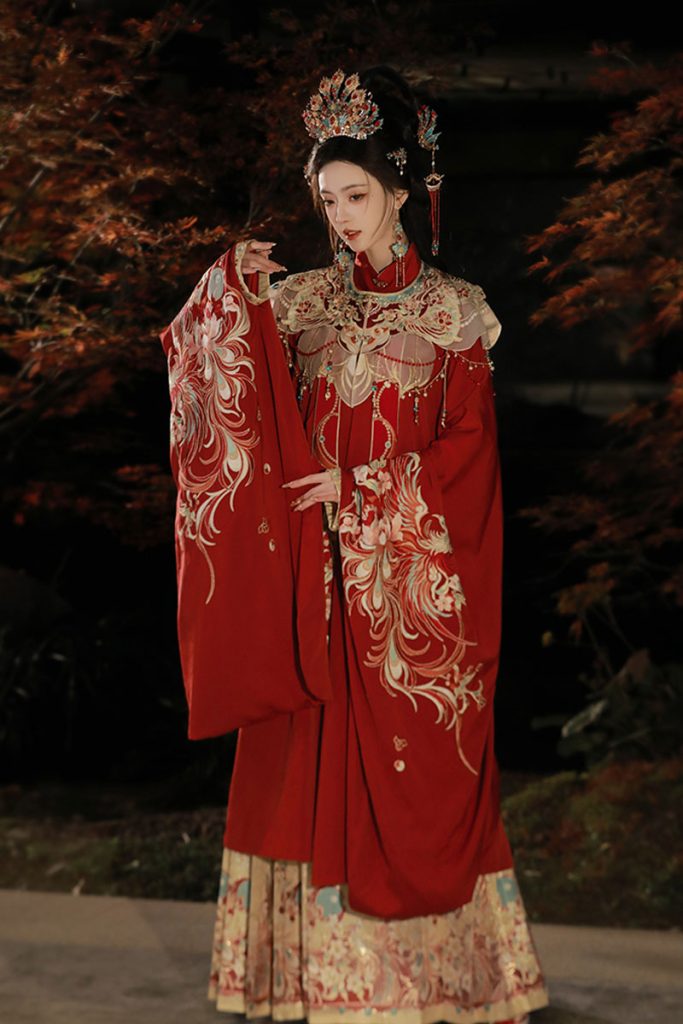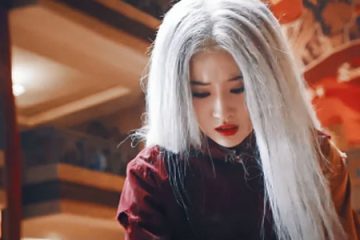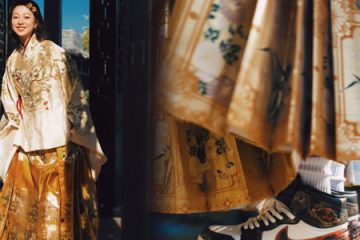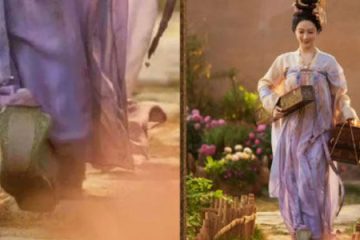What’s Going On with the Female Speaker’s Cloud Shoulder at This Year’s Harvard Commencement?

There’s been quite a bit of discussion on Chinese social media about Jiang Yurong—the student speaker at this year’s Harvard commencement—and the cloud shoulder (yunjian) she wore over her graduation gown.
Some people praised the look, saying it was a beautiful way for a Chinese graduate to showcase her cultural identity. But many others felt that the particular style of her cloud shoulder just looked… off. Something about it felt mismatched or awkward.
Personally, I wore a pink cloud shoulder over my own gown when I graduated, and it actually got a lot of compliments (I’ll spare you the original photo 😄 ). So today, I want to talk a bit about why some Chinese outfits with yunjian feel out of place—especially in modern settings—and what makes them work or not. If you’re curious, read on!
Ⅰ. What Makes This Cloud Shoulder “Different”?
At first glance, the cloud shoulder Jiang Yurong wore might not seem that unusual—especially if you’re familiar with hanfu or have browsed modern hanfu shops. But the uniqueness here doesn’t lie in this specific design itself—it’s more about how most cloud shoulders are designed today.

Modern hanfu cloud shoulders often use stylized, nature-inspired motifs—floral shapes, butterflies, and so on. The one she wore, incorporated goldfish, which is a interesting choice. That said, modern cloud shoulders (including hers) actually differ quite a lot from historical examples, and that difference shows up in a few key ways:

1. Stylized, cartoon-like look: Most modern cloud shoulders have a more animated or graphic style. The designs are typically machine-embroidered into a single flat pattern, which lacks the depth and layering you might find in historical pieces. The materials and embroidery techniques used are often quite simple and uniform.
2. Heavy on dangling decorations: Traditional cloud shoulders might include a few tassels, ribbons, or bead strings. But the one she wore takes this to the extreme—probably the most heavily decorated example I’ve seen. It incorporates nearly every kind of hanging ornament you could find on a hanfu cloud shoulder.
3. Strong emphasis on matching sets: Many modern Ming-style hanfu outfits are specifically designed to coordinate with cloud shoulders. For instance, you’ll often see white long top with colored trim around the collar and hem, or horse-face skirts with contrasting bottom edges—all meant to harmonize with the cloud shoulder, even if it means sacrificing historical accuracy.

Following this design logic, the outfit—consisting of just the long jacket and horse-face skirt—can look visually incomplete without the cloud shoulder. In fact, it’s fair to say that the clothing in this set was styled specifically to highlight the cloud shoulder itself.
This is actually a common approach in modern hanfu design. While the cloud shoulder may seem like an optional accessory, it’s often treated as an integral part of the overall look—functioning more like an exaggerated decorative collar or mini cape.
Of course, this doesn’t mean elements like tassels, ribbons, or beaded fringes are completely absent from historical examples. They do appear in surviving cloud shoulders, but such features weren’t universal or as emphasized as they are in many modern designs.


Due to differences in production methods, traditional cloud shoulders were typically made in multiple sections and layers, often featuring flexible hanging elements connected with knots or intricate stitching—techniques that can’t be easily replicated through mass production. That’s why you rarely see this kind of craftsmanship in modern hanfu-style cloud shoulders.
What’s more, the more decorative and elaborate a cloud shoulder is—especially with extensive hanging embellishments—the more complex and varied the techniques required. These high-level artisanal methods are rooted in traditional craftsmanship and are not commonly seen in today’s machine-produced versions.
And naturally, the more luxurious the cloud shoulder, the more refined the accompanying outfit needs to be. While modern hanfu sets often try to match by adding extra decorative details—sometimes even overly so for Ming dynasty clothing—it still often falls short of achieving true balance.
Ⅱ. Why Did the Cloud Shoulder Look Slightly “Off” on Her?
When enthusiasts of Ming-style hanfu wear a cloud shoulder with their graduation gown—especially in China where the academic robes tend to have shorter sleeves—they typically pair it with a full outfit, including a *mamian* skirt and a long-sleeved top underneath. In fact, there have been Harvard graduates who wore the full hanfu ensemble, simply layering their academic gown over the long robe and under the cloud shoulder. Visually, this tends to create a more balanced and cohesive look.

In contrast, when some people try to mimic the combination of a cloud shoulder and a graduation gown, they often wear just the cloud shoulder on top of their usual outfit, without incorporating the rest of the hanfu elements. That’s likely where the sense of mismatch or “off-ness” comes from.
This was exactly the case with Jiang Yurong—she wore only the cloud shoulder. Some people also commented on her loose hair and Western-style makeup, but these are just extensions of the broader conversation. The truth is, her outfit wasn’t trying to follow the framework of Ming-style hanfu in the first place~
Summary
We’ve actually touched on this point before, but it’s worth repeating: as long as someone dresses with respect for appearance and etiquette (including when wearing hanfu), that should be considered appropriate.
Many netizens expressed dislike toward Jiang Yurong—not necessarily because of her outfit, but because of what they saw as “performative speech”, or doubts about her academic credibility. We won’t get into that here.

If we’re just looking at her cloud shoulder and how it was styled, I personally think the overall look would’ve been much improved with a well-done hairstyle—something that balances out the visual focal point. It doesn’t have to be a traditional hanfu hairstyle, but leaving the hair loose made the whole look feel a bit top-heavy.
What do you think? Feel free to share your thoughts in the comments!



0 Comments